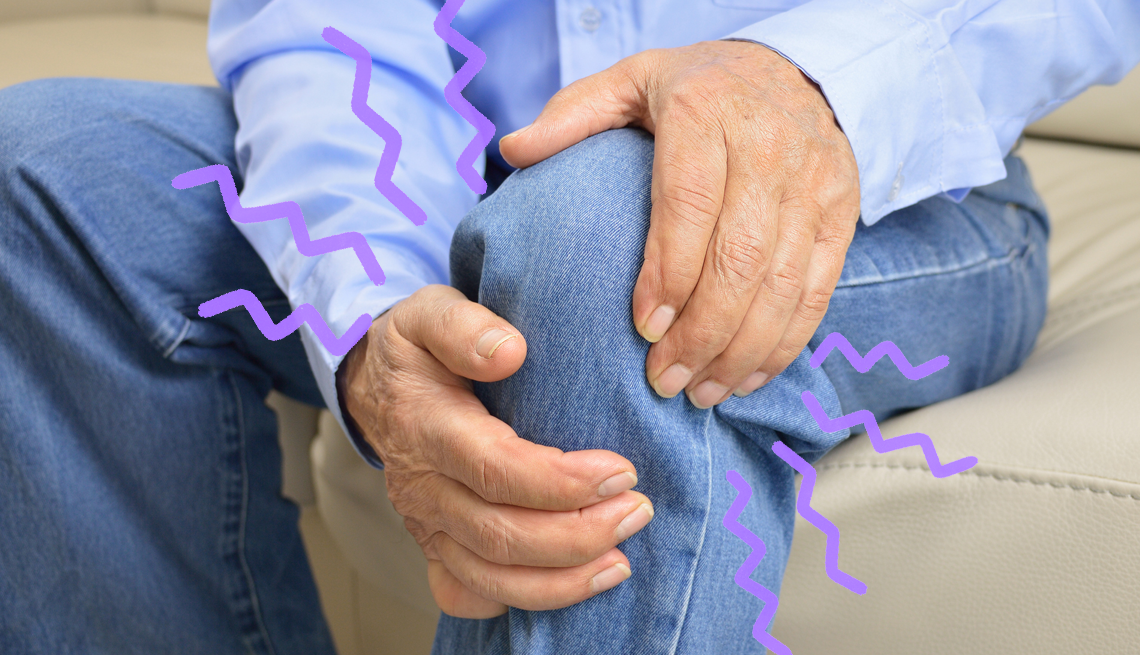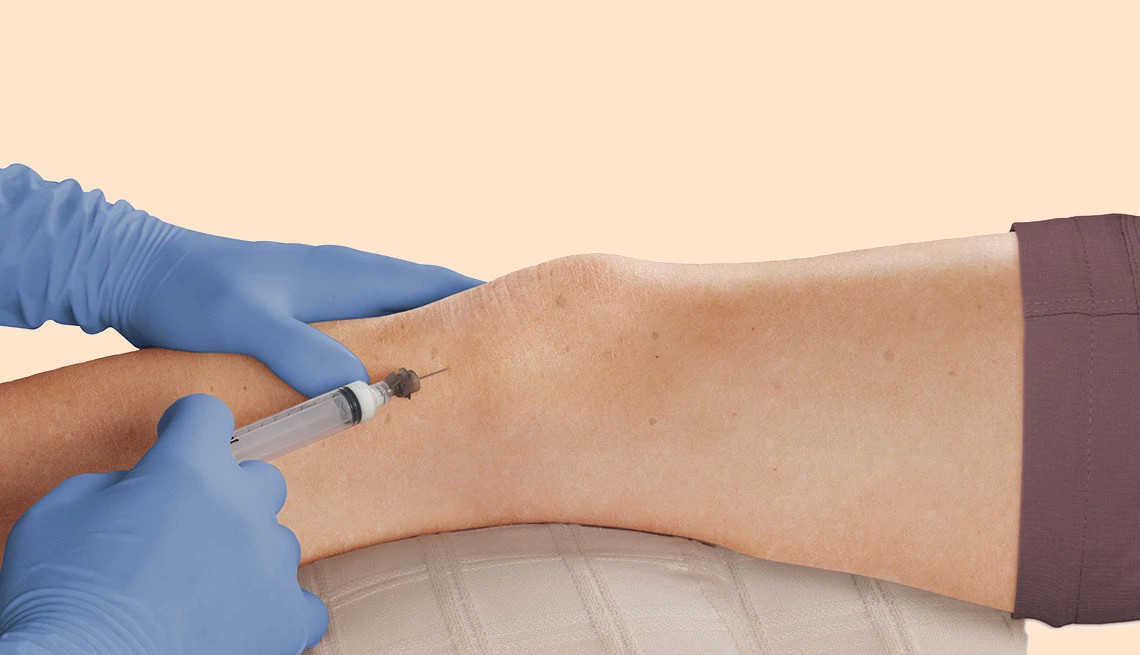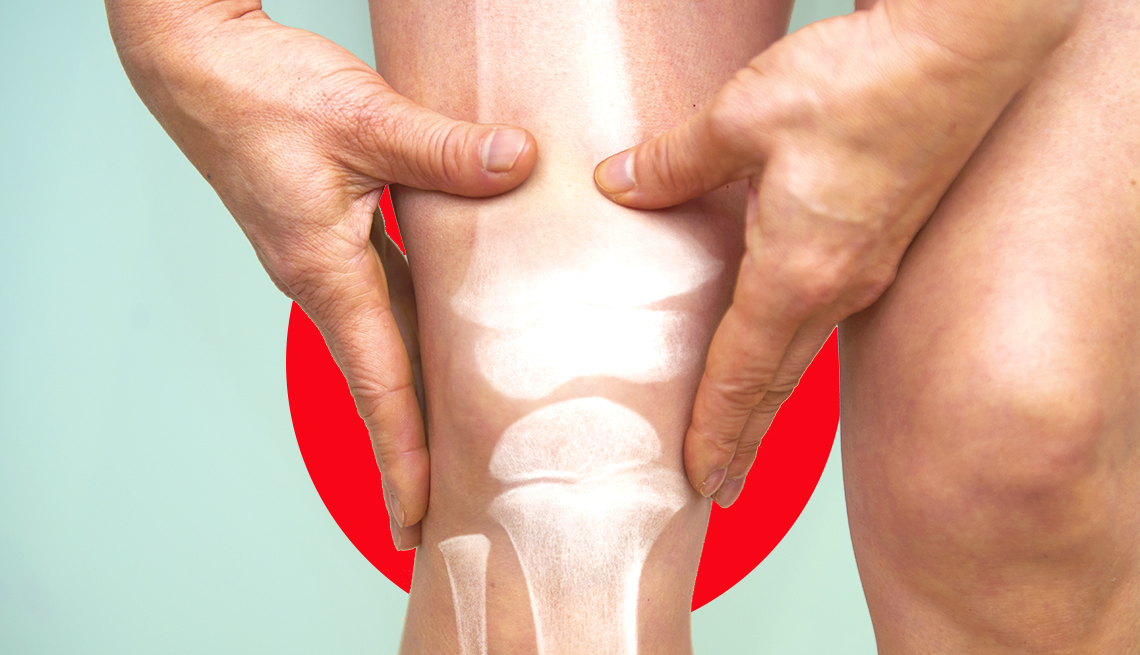AARP Hearing Center


When Carole Porter’s* knees gave way to osteoarthritis in her late 50s, she started getting injections of hyaluronic acid (HA) gel every six months. For the next 10 years, Porter says, her knees were fine — until one day the injections stopped working. “I couldn’t walk 100 feet without terrible pain,” says the New York business executive, now 76. Permanent relief ultimately came by way of knee replacements.
Los Angeles architect Steven Ehrlich, 77, finds that every year or so, an injection of platelet-rich plasma (PRP) into his arthritic left knee provides some relief, enough for him to pursue an active lifestyle of golf, paddle tennis and heli-skiing. Although Ehrlich’s osteoarthritis is moderate, he’s relatively pain-free.
Kathy Cope had a very different experience. After suffering with osteoarthritis in her knees for 20 years, she tried HA injections in 2022. Taken over two months, the injections had no effect at all. Cope, 76, a retiree who splits her time between New York and Florida, soon went the knee-replacement route.
About 1 in 7 people diagnosed with knee osteoarthritis will receive some sort of injection to treat the painful, sometimes debilitating, symptoms of the disease. Yet studies in recent years have found that most of these injections actually do very little to improve osteoarthritis in the knees and are only slightly more effective than a placebo.
“They are safe, with minimal downsides; they may be helpful, and we don’t have many other great options,” says Scott Rodeo, M.D., codirector of the Orthopedic Soft Tissue Research Program at Weill Medical College of Cornell University in New York. But medical organizations have pulled back on their endorsements of knee injections.
In its 2021 guidelines, the American Association of Orthopaedic Surgeons (AAOS) “conditionally recommended” the use of one type of injection — corticosteroids — and advised against HA injections. Two other types — PRP and stem cell injections — are not fully approved by the Food and Drug Administration and are regarded as experimental by insurance companies.

.jpg?crop=true&anchor=0,0&q=80&color=ffffffff&u=k2e9ec&w=1140&h=655)
To help you wade (knee-deep) through the confusing world of injections, here’s a rundown of the most common kinds of shots and what the experts say about them.
Corticosteroids
What are they? After weight loss, exercise and anti-inflammatories, corticosteroids are usually the next option for treating knee pain. Corticosteroid shots are a combination of the steroid cortisone and a numbing agent that is injected into the knee for fast, temporary relief during a flare-up.
Do they work? Yes. They’re regarded as the fire extinguisher of knee injections — they usually start working within 48 hours to reduce pain and inflammation around the knee joint. Studies show corticosteroids can effectively provide short-term relief, though some people report success over a longer period.
“I’ve had patients who received injections in their knees every three months for several years,” says Cara Cipriano, M.D., an associate professor of adult reconstruction at the Perelman School of Medicine at the University of Pennsylvania. “Others feel that over time, the effects fade. In these situations, we move on to other treatments.”
What to know: Corticosteroids are typically administered up to four times a year. Although they’re relatively safe and effective, overuse may contribute to further deterioration of knee cartilage. People with diabetes or other metabolic conditions should be aware that they may increase blood sugar levels. Corticosteroid injections are covered by Medicare Part B and other insurance plans.














































































More on Health
8 Knee-Strengthening Exercises to Reduce Pain
Experts say ‘motion is lotion’ for achy or injured knees
7 Ways to Prevent Hip Injuries
Hip fractures can be dangerous but are often preventable with a balanced exercise plan
5 Exercises for Your Bones
Try these easy moves at home
Try These Tips for Living a Healthier Life
Small changes can add up to big mental and physical results
Recommended for You